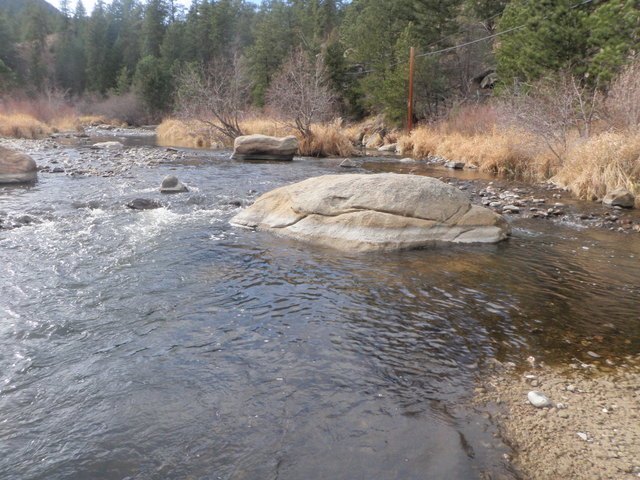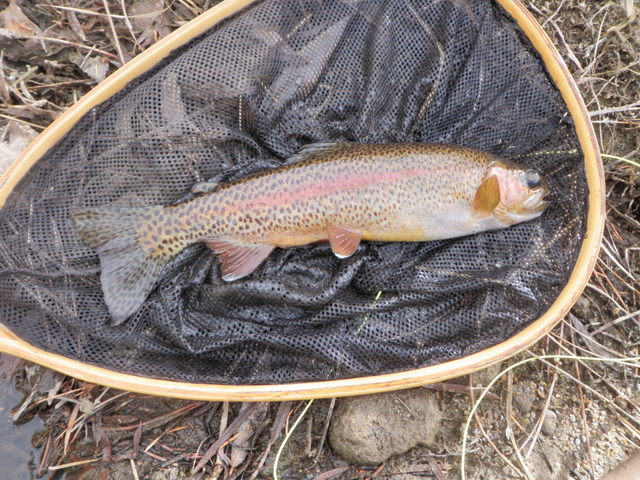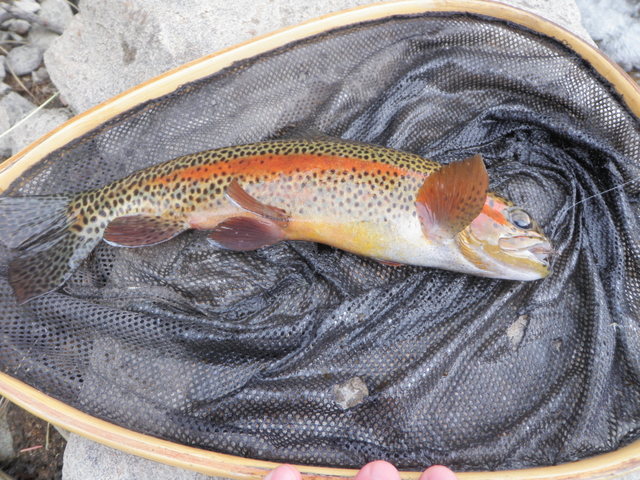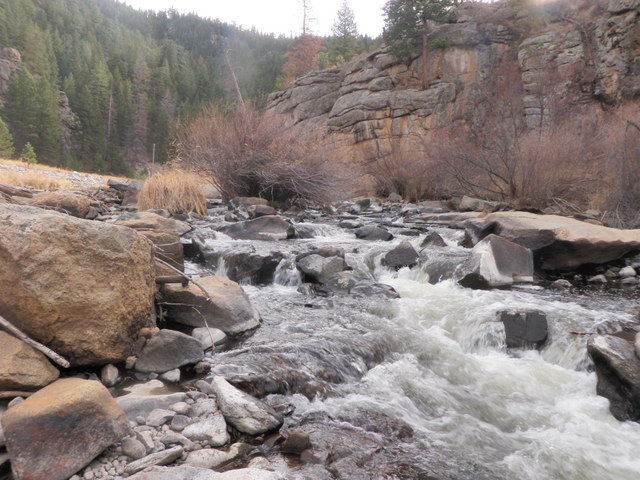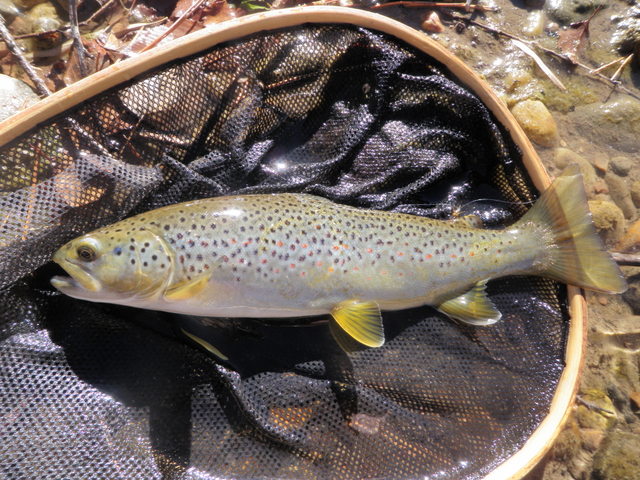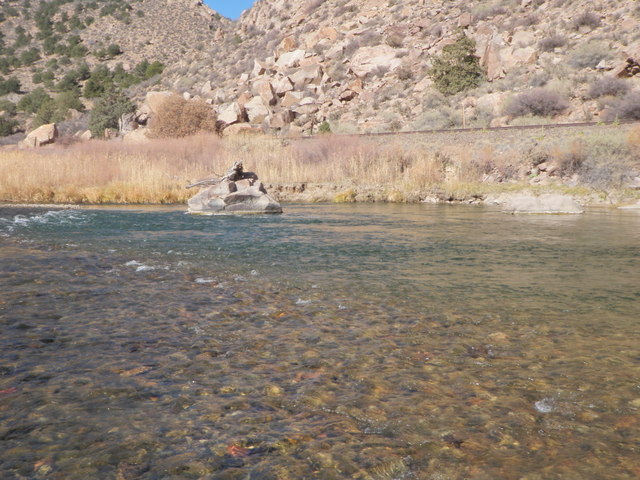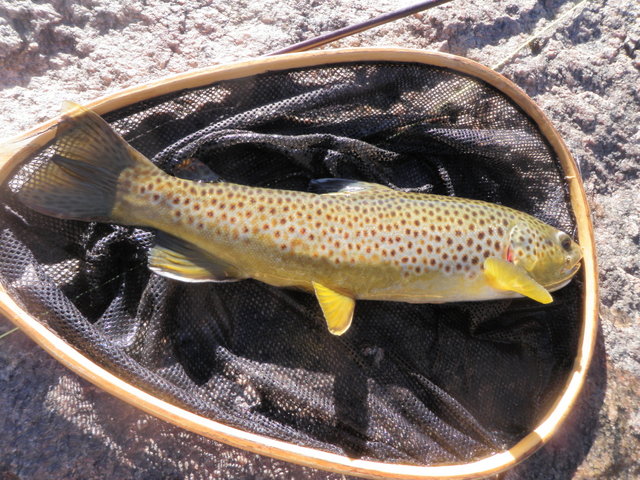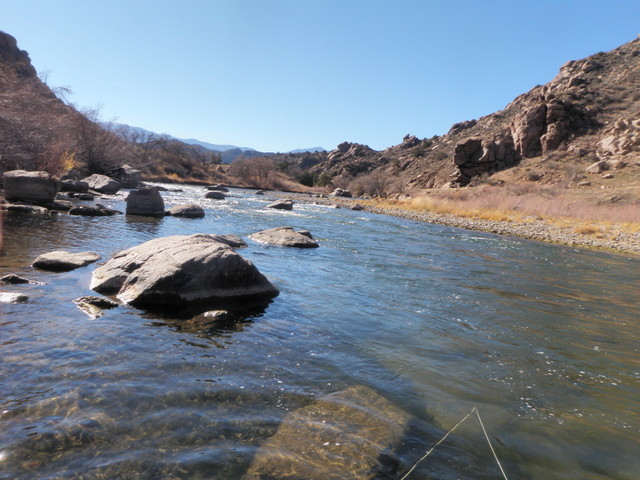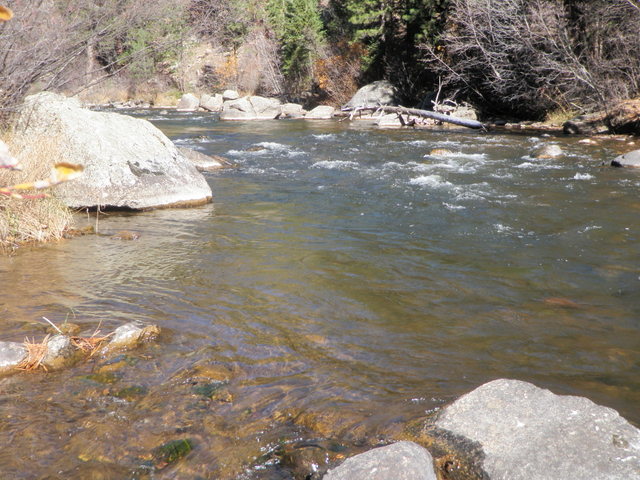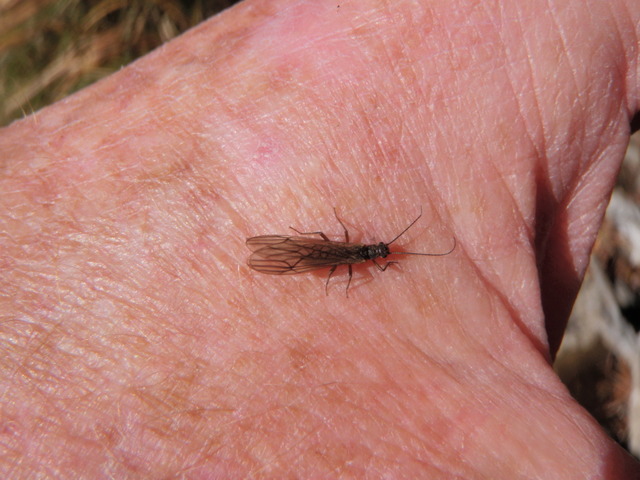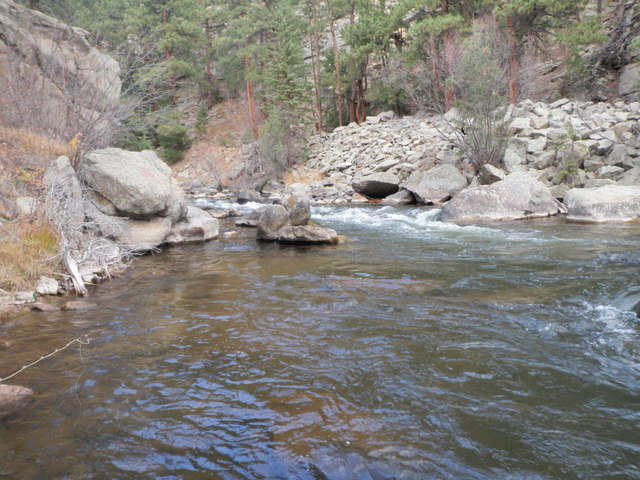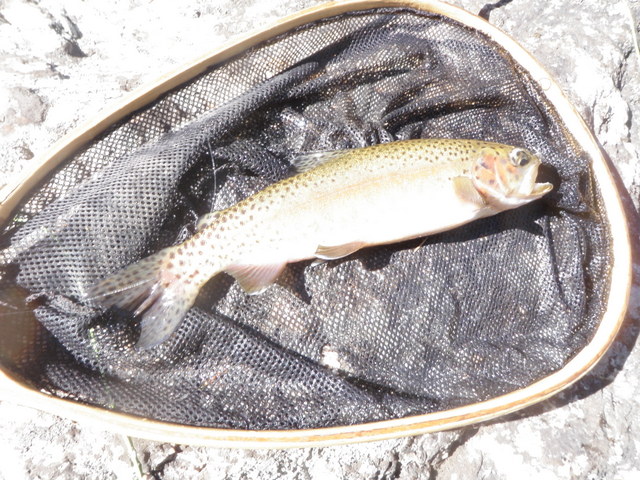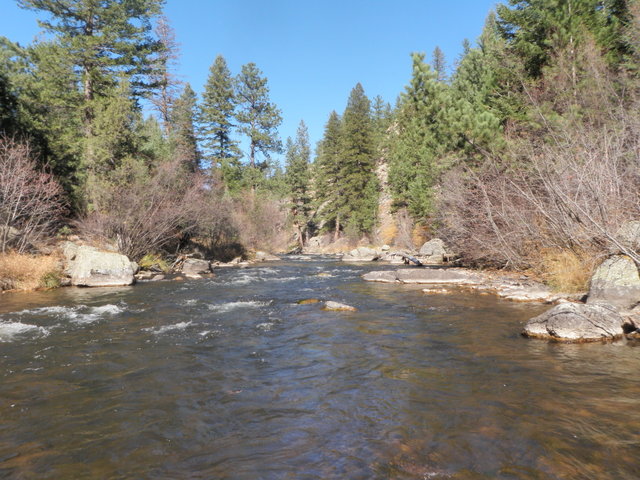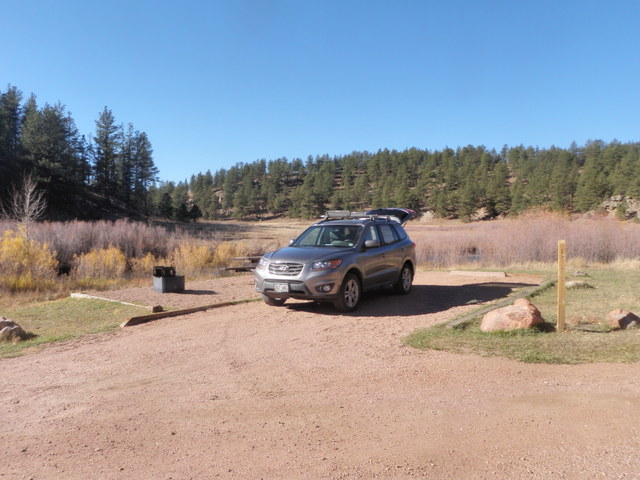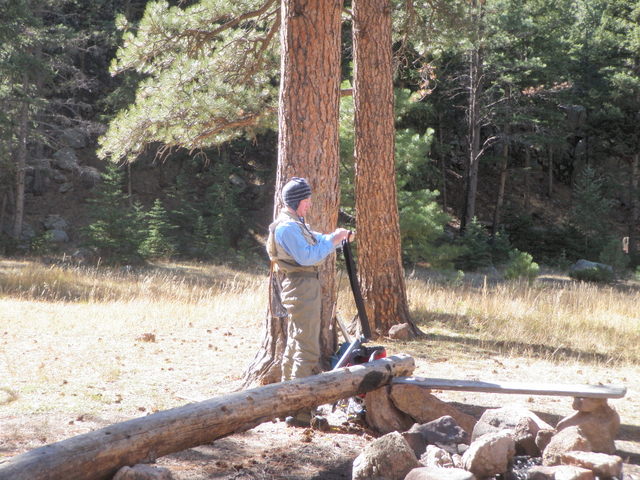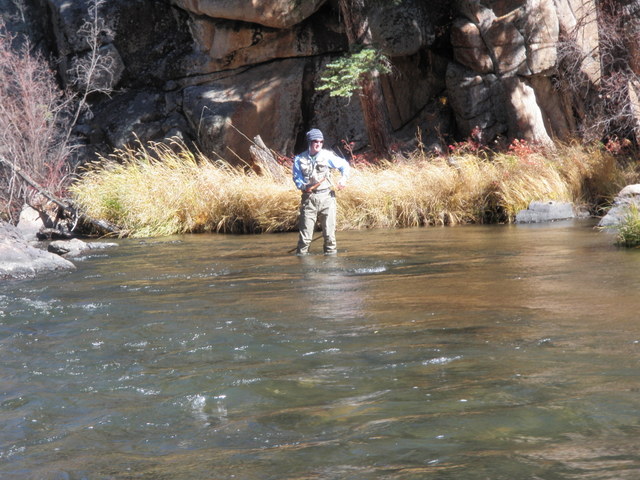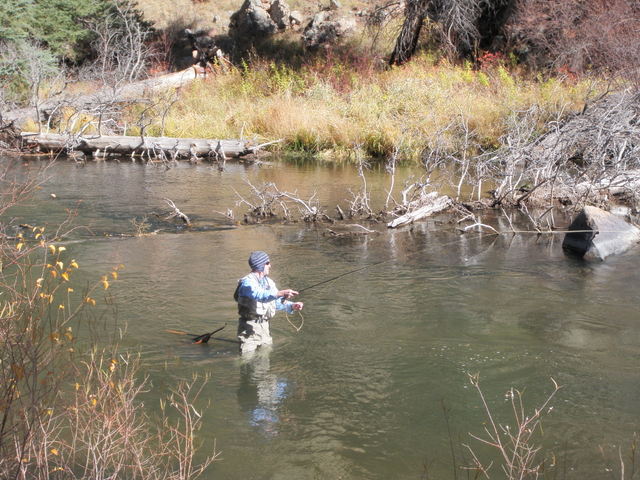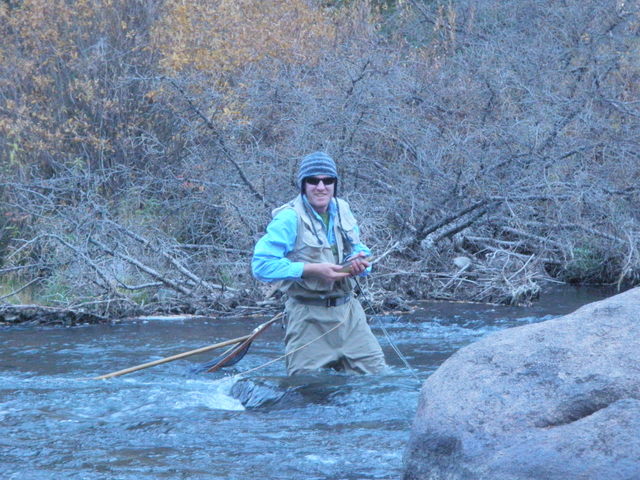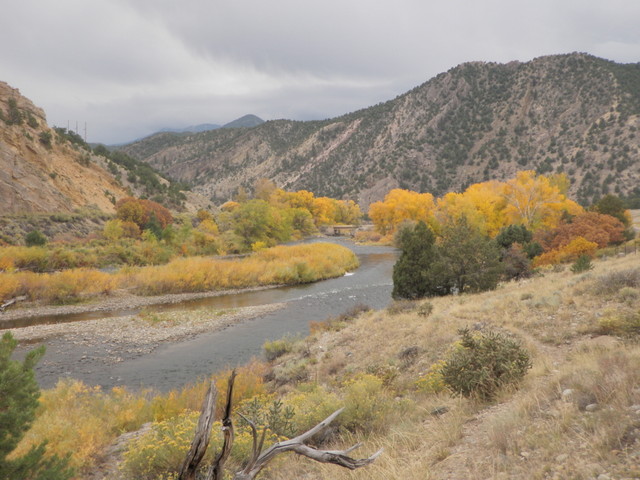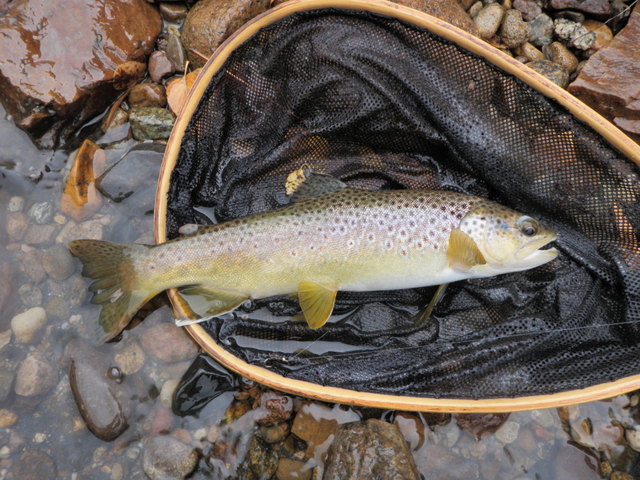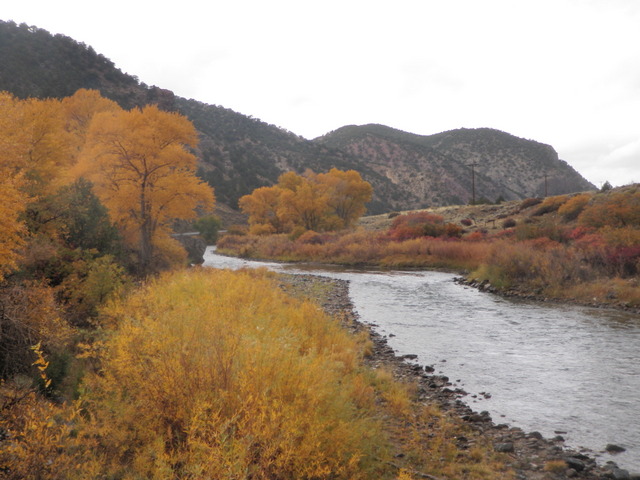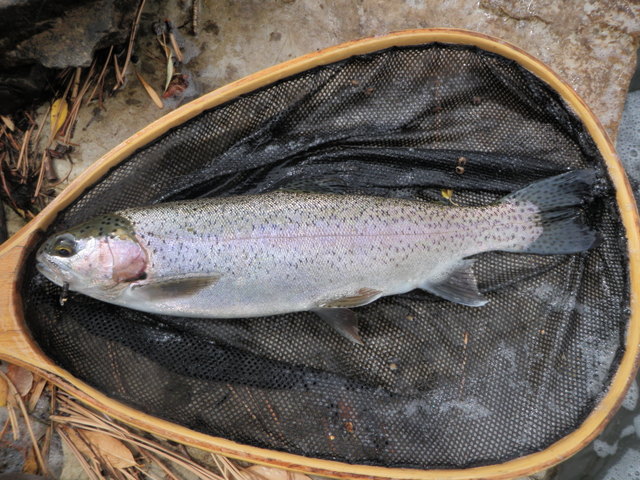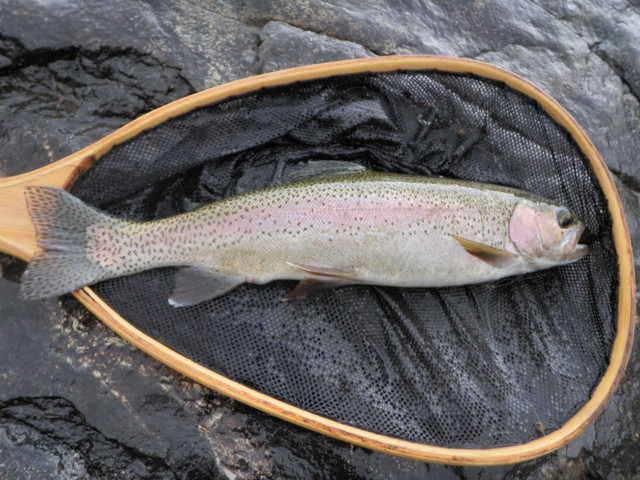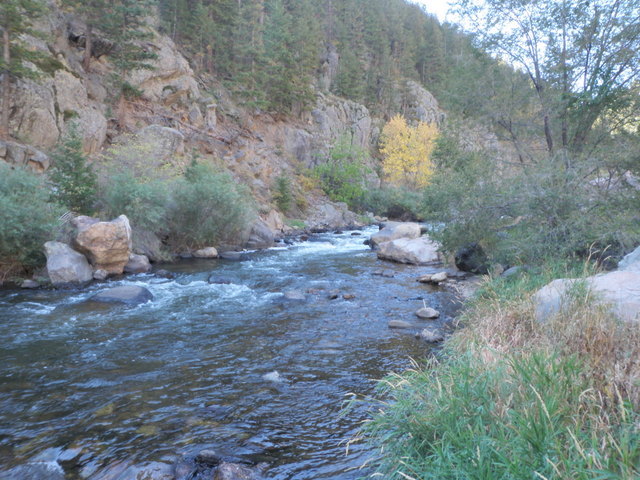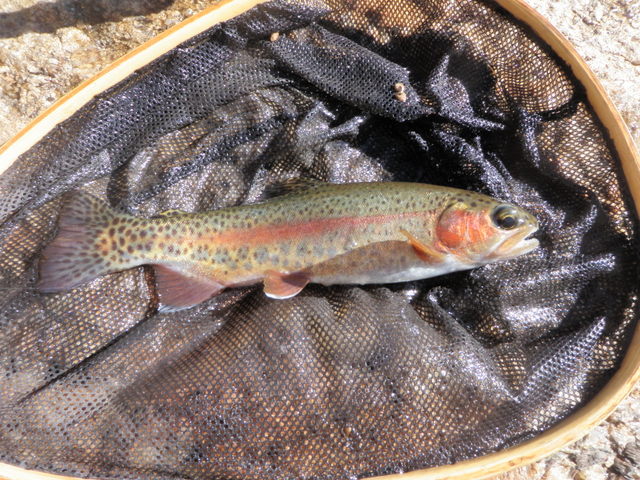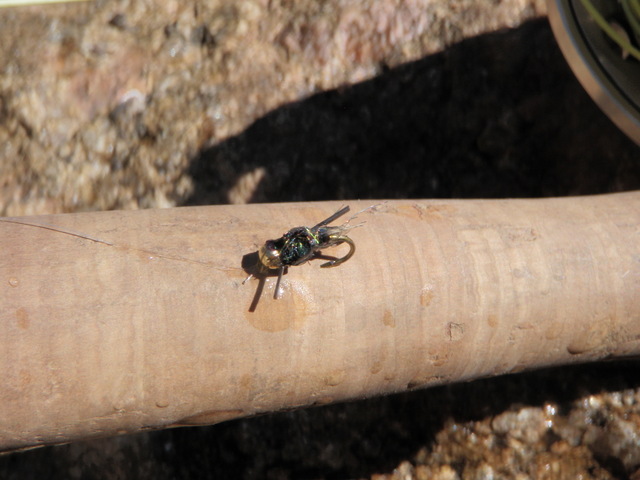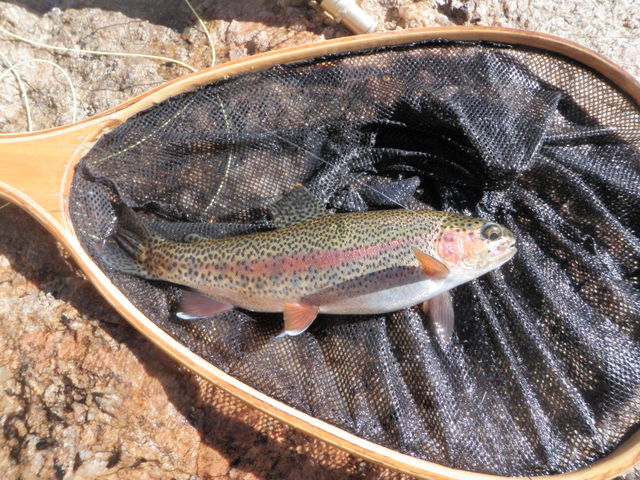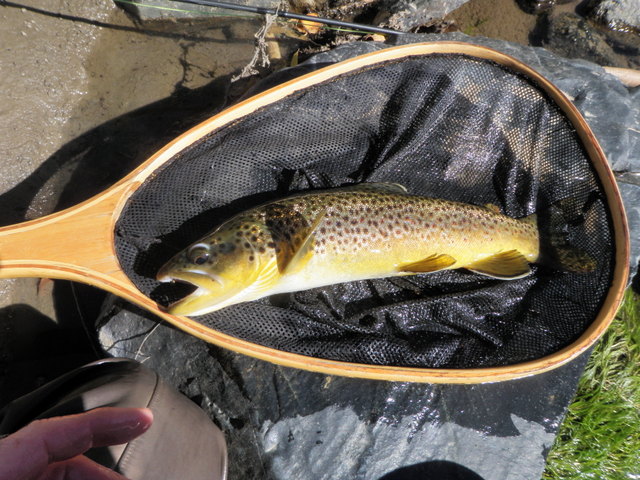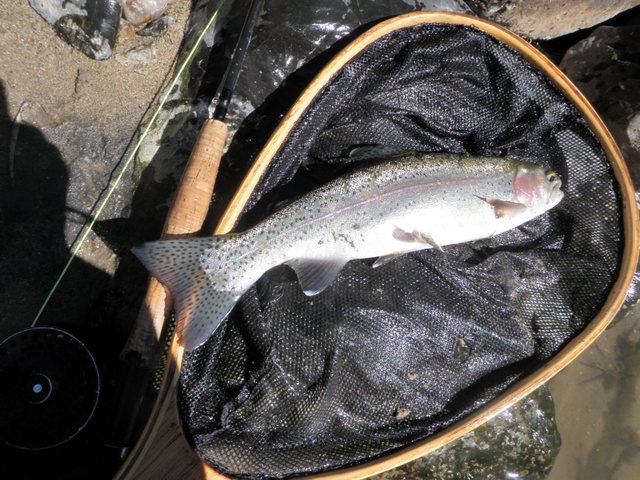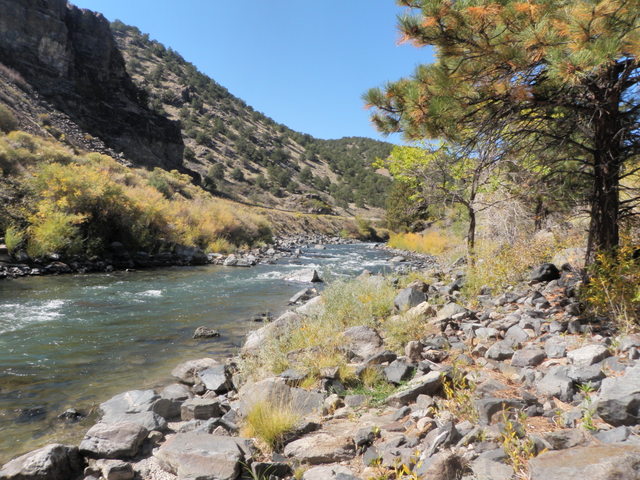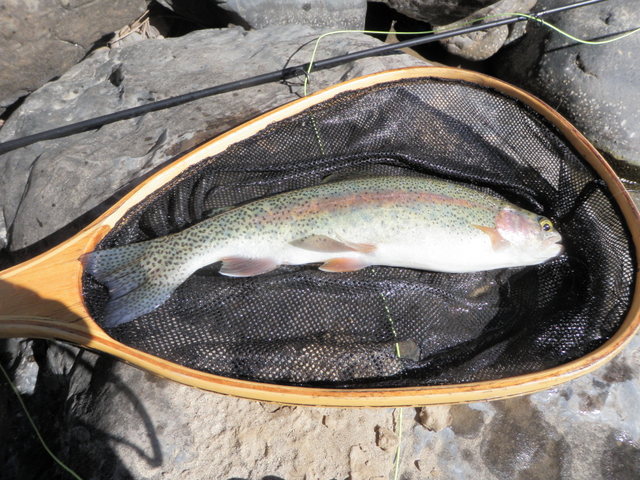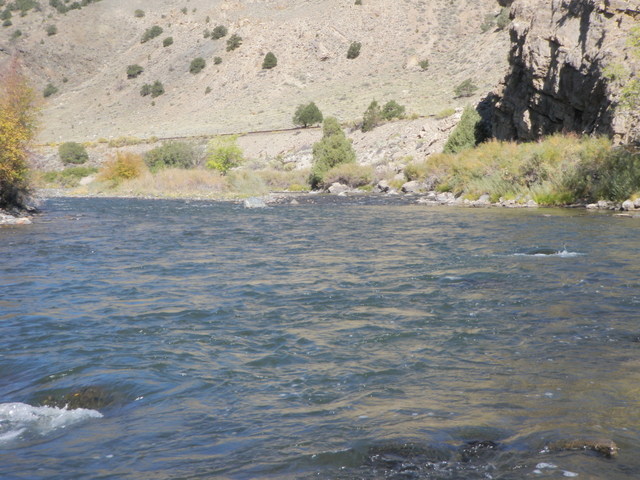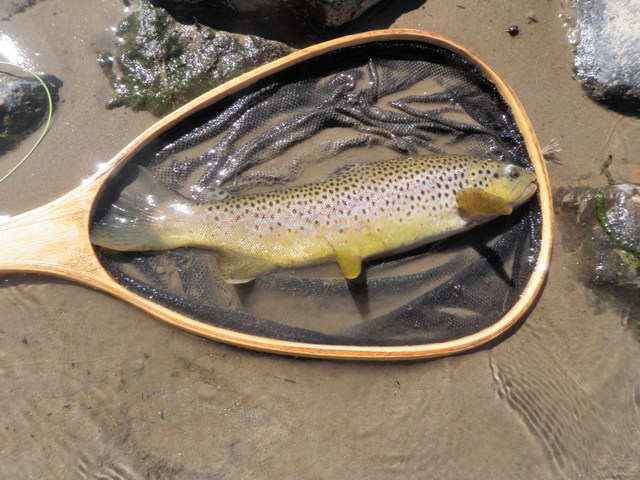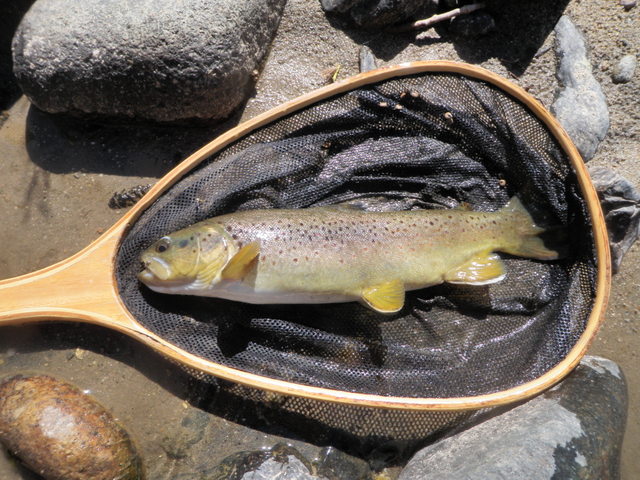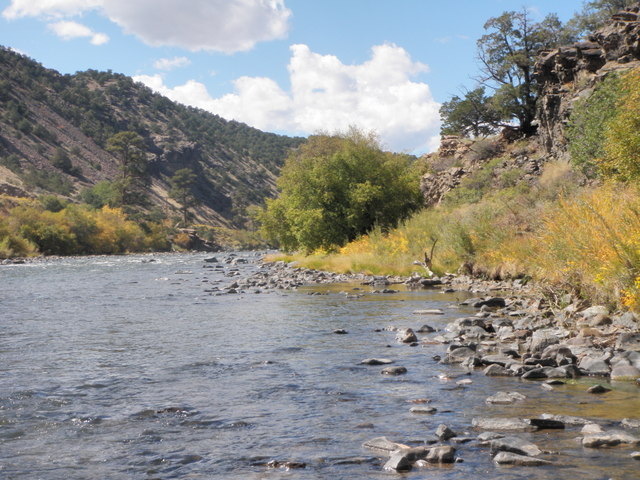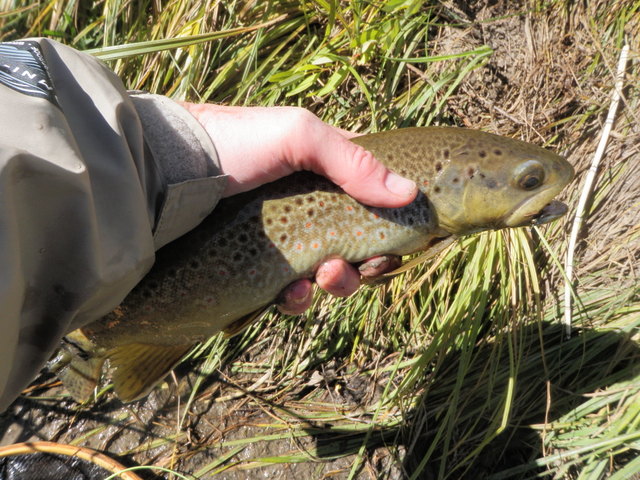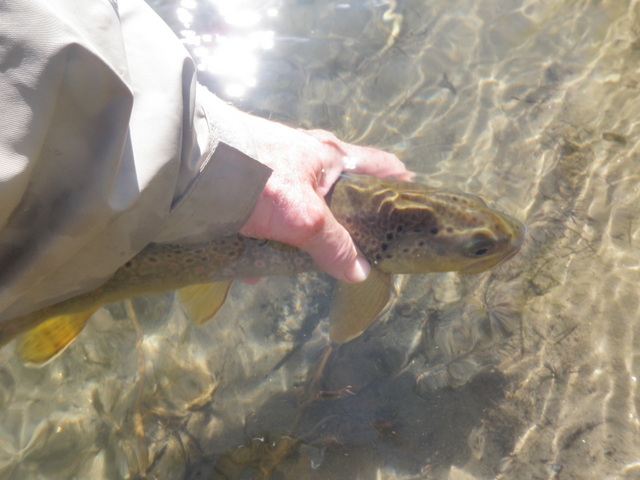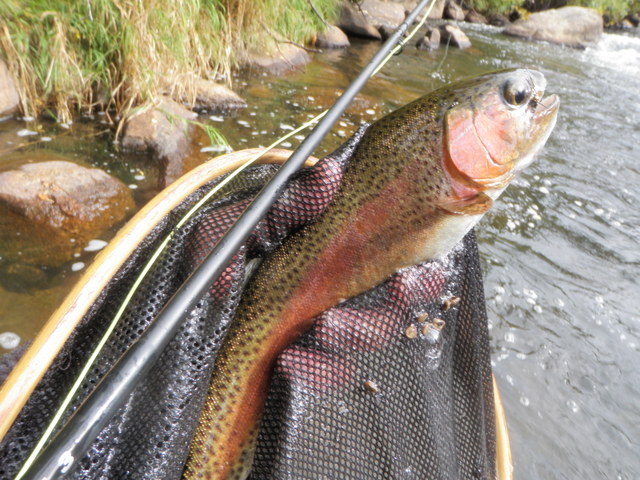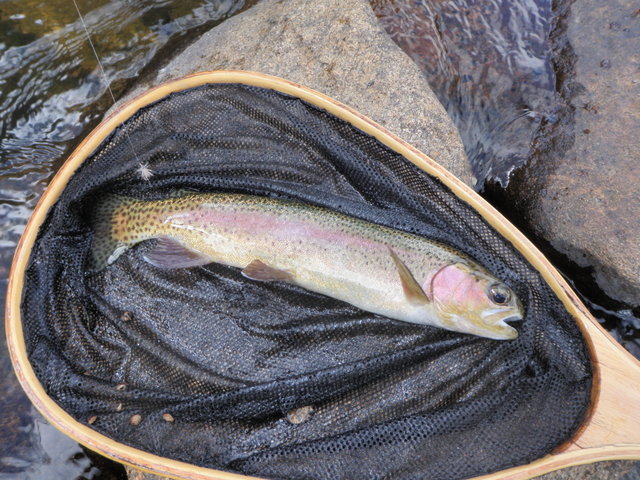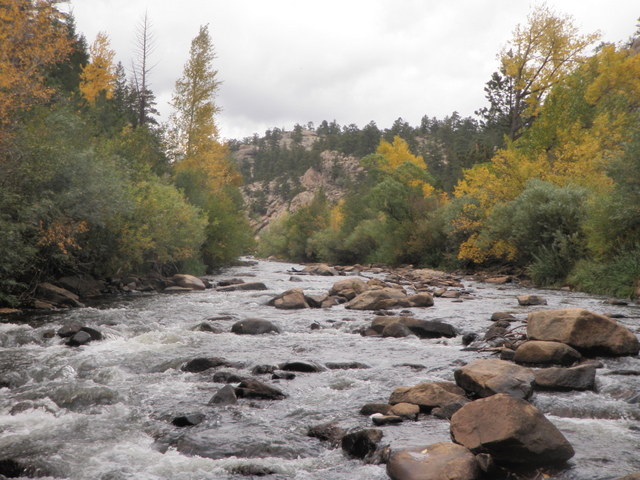Time: 10:30AM – 3:00PM
Location: Large pullout on downhill .5 mile below first bridge after Noel’s Draw
Fish Landed: 5
Big Thompson River 11/21/2012 Photo Album
Normally at this time of the year we are planning our first ski outing or getting ready for the Thanksgiving feast or beginning our Christmas shopping; however, in 2012 after canceling our trip to Argentina due to Jane’s bicycle accident, I decided to make another fishing trip. The primary impetus was the forecast for a high temperature of 69 in Denver on Wednesday November 21, the day before Thanksgiving. All the local streams were exceptionally low, and I wasn’t up for another long trip to the Arkansas River, so I opted for The Big Thompson River below Estes Lake. The DWS tracked flows of around 21 cfs and that is less than 50% of what Dan and I experienced on our last trip, but I felt those flows would still offer decent fishing.
I left the house slightly before 9AM and didn’t expect to begin fishing until 11AM allowing time for the sun to heat up the air and water. I made better time than I anticipated and found myself on the water by 10:30AM. I elected to drive roughly .5 mile beyond the location fished on my recent trip with Dan to a place where a large pullout exists on the right side of the highway. Unfortunately the temperature in the canyon was in the low 50’s as I dressed to fish, and to make matters worse a chilly breeze blew on a fairly frequent basis. I elected to wear two top layers and never during the course of the day did I feel overdressed.
I rigged up my Orvis Access four weight and walked down the shoulder of the highway a ways to a point below a short stretch of steep gradient with numerous deep pockets. I expected to fish with nymphs, but the flows were low and I felt like the indicator landing in the water would spook the fish, so I changed strategy and tied on a size 18 deer hair black stonefly dry fly. I had three remaining flies that I tied after my inital encounter with these insects on South Boulder Creek. After tying on the stonefly imitation I began prospecting the pockets quickly but experienced no success until I reached the top of the steep gradient area where the river fanned out in some slower moving pockets, and here I spotted several fish hanging at the tail of some pools. I executed quite a few drifts over these fish and eventually as I lifted my fly right at the lip of the pool a fish slashed at my fly, and I experienced a momentary hook up. I was disappointed that this did not result in a landed fish, but I was pleased to create some action on a surface fly this late in the season.
I switched to another attractive stretch of water above the pool just described and once again felt a brief moment of weight on my line when a trout grabbed the stonefly as it skated near the top of a pool. So far the fish seemed to be interested in movement in order to expend energy and chase. To my left there was a nice deep hole next to a faster run just below a large exposed boulder so I popped a cast to the upper edge of the current seam and on the second or third cast a fish tipped up and sucked in the deer hair fake causing me to set the hook and play a chunky 8-9 inch brown trout into my net. Success! I had managed to dupe a fish to take a dry fly in late November. Meanwhile it was quite chilly and the wind was gusting on a fairly regular basis making it quite difficult to cast my tiny dry upstream, and this doesn’t even begin to describe the challenge of placing casts on my desired targets.
After releasing the brown I found myself just below the tip of a long narrow island, so I elected to fish the larger left channel that flowed next to the road. There was a long smooth pool of moderate depth that flowed almost the entire length of the island so I began shooting long casts 25 feet upstream and along the island bank. This proved to be more difficult than it sounds due to the everpresent breeze, but after I’d moved eight feet above the lip of the pool, I spotted several decent fish finning no more than seven feet in front of me. They were moving periodically so I felt they were eating and not just sulking on the bottom of the stream. After numerous drifts with the stonefly it became clear that they were not interested in my offering so I clipped it off and tied on a size 14 olive stimulator and then extended some 5X tippet off the bend and added a small beadhead midge larva with a silver rib.
I cast this combination above the deep trough where I spotted two fish and on the fourth or fifth drift the stimulator dipped, I set the hook and discovered myself attached to a pretty twelve inch rainbow thrashing madly on the end of my line. I was excited that my change in approach resulted in a hook up and also optimistic that the midge larva might be the hot fly that led me to numerous additional catches. Alas as I clung to this thought while probing the remainder of the pool and then working some sweet water above the island, it became just that, only a thought and not reality. It became clear that the stimulator and midge larva were not the winning combination I had envisioned so I clipped off the stimulator and tied on a Chernobyl ant and below that added a beadhead hares ear. The hares ear had been my salvation on the Arkansas River, so why wouldn’t it produce on the Big Thompson in a late season test?
I worked the Chernobyl through quite a few attractive pools and runs as I now approached the stretch directly across and slightly below where the Santa Fe was parked, and I’d pretty much given up when a rainbow rose and slurped the Chernobyl at the tail of a small but deep slow moving pocket ten feet out from the bank next to the road. I was pleased but surprised with this turn of events as I released the rainbow and noted that I’d caught three fish on three different flies, but struggled to find a commonality to repeat. I glanced at my watch and noted that it was a few minutes after noon and my feet were getting quite chilled, so I decided to head back to the car and grab my lunch. The wind had died back a bit and the sun was now high in the sky and creating some warmth, so I carried my lunch bag and water bottle across the highway and found a nice rock in the sun to use as my lunch bench.
I was right next to another nice long deep pool and as I downed my sandwich, I spotted a pair of trout along the left side of the pool. I made a mental note of their position and commited to drift my Chernobyl and hares ear over these fish. As is my custom after lunch, I returned to my point of exit before lunch and continued prospecting the likely trout holding locations. As the afternoon progressed I became less thorough in my approach and sought out the places similar to those that produced in the morning. I reached the long pool near my lunch spot and drifted the Chernobyl and hares ear over the spotted fish, but unlike my vision during lunch, they paid no attention to my imitations. I decided it was time to change strategy again and decided to go back to the size 18 deer hair stonefly. I’d only landed one fish on this fly; however, I’d also induced a few looks, refusals and momentary hookups so this seemed to be creating the most interest. Perhaps only a small percentage of the fish were inclined to eat in these cold water conditions.
From one to three PM I covered a fair amount of water casting the deer hair stonefly to every likely spot, and I managed to land two additional rainbows. One was another fine twelve inch fish with a brilliant red stripe on the side. Both fish were caught in similar water to my earlier catches; small but slow moving deep pockets, and they rose and sipped the fly right along the edge of some faster current.
By three o’clock I reached another stretch of water that was moving faster due to a steeper gradient and the air was cooling as the sun dropped toward the west so I decided to quit and congratulate myself on five fish landed late in the season in spite of a chilly wind and low flows. In addition my arm was quite tired from repeatedly casting into the wind and raising my arm to keep the fly line off the water. I hesitate to close the book on the 2012 season because everytime I announce this intent, another warm weather system moves into Colorado. Will it happen again?

